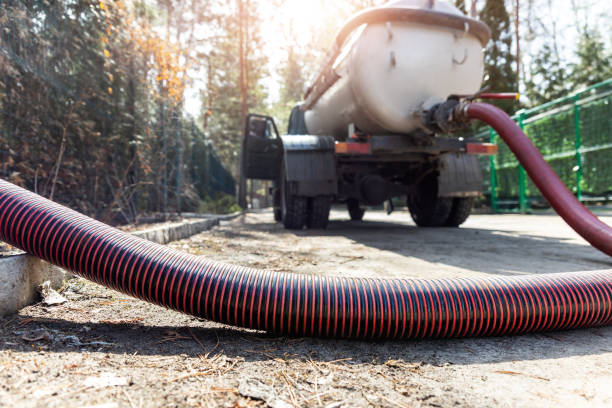Contents
Key Takeaways
- Regular cleaning prevents operational inefficiencies and extends the lifespan of equipment.
- Automated cleaning systems enhance safety by minimizing human entry into confined spaces.
- Proper equipment selection and maintenance are vital for effective cleaning operations.
Maintaining clean tanks and pits is a crucial aspect of industrial facility management, as it directly impacts operational safety, efficiency, and compliance with stringent environmental standards. Leveraging specialized cleaning equipment, such as a vacuum truck, can streamline the removal of sludge and hazardous materials, reducing costly downtime while safeguarding employees and the environment.
Industries from petrochemical to food processing face unique tank and pit cleaning challenges, including confined spaces, residue management, and decontamination. Using advanced solutions and maintenance strategies improves uptime, safety, and compliance. Neglecting regular cleaning leads to dangerous buildup, corrosion, or system failure, but routine practices ease inspections and ensure regulatory adherence, especially with EPA scrutiny. Specialized tools and automation reduce risks of manual confined space entry, fostering safer, more sustainable cleaning of vital infrastructure.
Understanding the Importance of Regular Cleaning
Industrial tanks and pits are susceptible to the accumulation of sludge, scale, residual chemicals, and other debris. If left unchecked, these contaminants can compromise performance, affect product purity, and pose serious safety threats ranging from toxic fume release to combustible conditions. Proactive maintenance, including routine cleaning schedules, is strongly advised by safety agencies and industrial experts alike. According to OSHA’s guidelines, regular tank and pit cleaning is an integral aspect of hazardous worksite management, helping to eliminate risks before they can threaten personnel or disrupt operations.
Choosing the Right Equipment
The diverse nature of tanks—varying in size, construction materials, and the type of substances stored—means that a one-size-fits-all approach rarely works for cleaning. Equipment selection should be based on factors such as access points, internal obstructions, and the chemical composition of residues. For example, rotating spray heads and high-pressure water jets are ideal for dislodging stubborn deposits in large, cylindrical tanks, while articulating spray arms are most effective in complex, compartmentalized containers. Modular systems with programmable cycles provide flexibility and increased efficiency for facilities that handle multiple types of tanks and pits.
Implementing Automated Cleaning Systems
Automated solutions, such as Clean-in-Place (CIP) and mobile robotic units, are revolutionizing industrial cleaning. Technologies that deliver precise volumes of cleansing agents and mechanical action allow for consistent results with minimal manual oversight. The food and beverage industry, for instance, has widely adopted CIP systems for sanitizing processing equipment without the need to disassemble or enter tanks. Such systems reduce the risk of human exposure to hazardous materials and can be customized for interval cleaning, maximizing both hygiene and uptime.
Ensuring Safety During Cleaning Operations
Reducing human entry into confined or hazardous spaces is critical to workplace safety. Modern equipment, such as manway cannons, remotely controlled robotic cleaners, and pneumatic vacuums, allows technicians to operate from safe distances while achieving thorough results. These tools also help limit exposure to toxic fumes or flammable vapors and ensure facilities meet occupational health mandates. Leveraging technology as a protective barrier further reinforces a culture of safety and supports ongoing compliance with industry standards. The Centers for Disease Control and Prevention (CDC) highlights confined space hazards and recommends advanced equipment for mitigation in their confined space guidance.
Maintaining Cleaning Equipment
Specialized cleaning tools themselves require systematic upkeep to provide consistent results. Regular inspection of critical parts such as nozzles, seals, hoses, and filtration systems minimizes the risk of malfunction and extends the service life of high-value assets. Scheduled preventative maintenance—supported by manufacturer guidance—includes routine calibration, pressure testing, and replacement of wear components. Establishing a thorough maintenance log and investing in staff training on equipment handling are proven ways to secure operational continuity and worker safety further.
Environmental Considerations
Sustainable cleaning practices are becoming increasingly important as industries strive to balance productivity goals with eco-friendly mandates. High-efficiency methods, such as hydro-jetting, which utilizes powerful water streams for debris removal, eliminate the need for harsh chemicals and minimize wastewater generation. Selecting technologies and methods that align with both environmental standards and facility-specific waste management protocols can help reduce a facility’s environmental footprint. Industrial leaders are encouraged to reference EPA guidelines and stay up-to-date on best practices for minimizing waste and pollution.
Conclusion
Adopting specialized equipment and adhering to best practices for tank and pit cleaning delivers far-reaching benefits. By investing in automated cleaning systems, ensuring routine maintenance, and prioritizing both safety and sustainability, industrial facilities can achieve optimal efficiency, compliance, and environmental stewardship. Proactive, technology-driven cleaning strategies are the cornerstone of safe, successful operations in demanding industrial settings.




